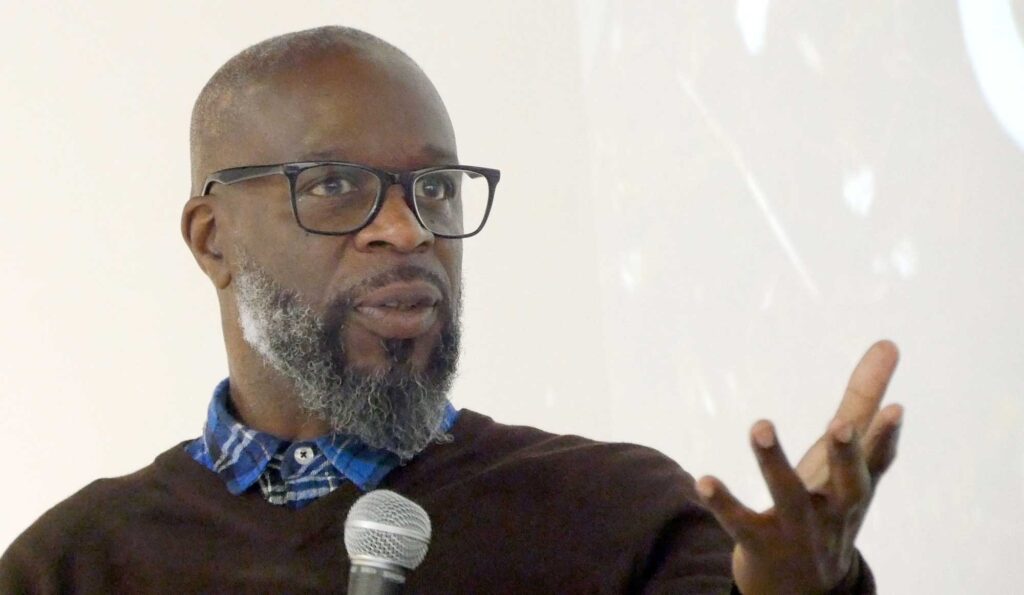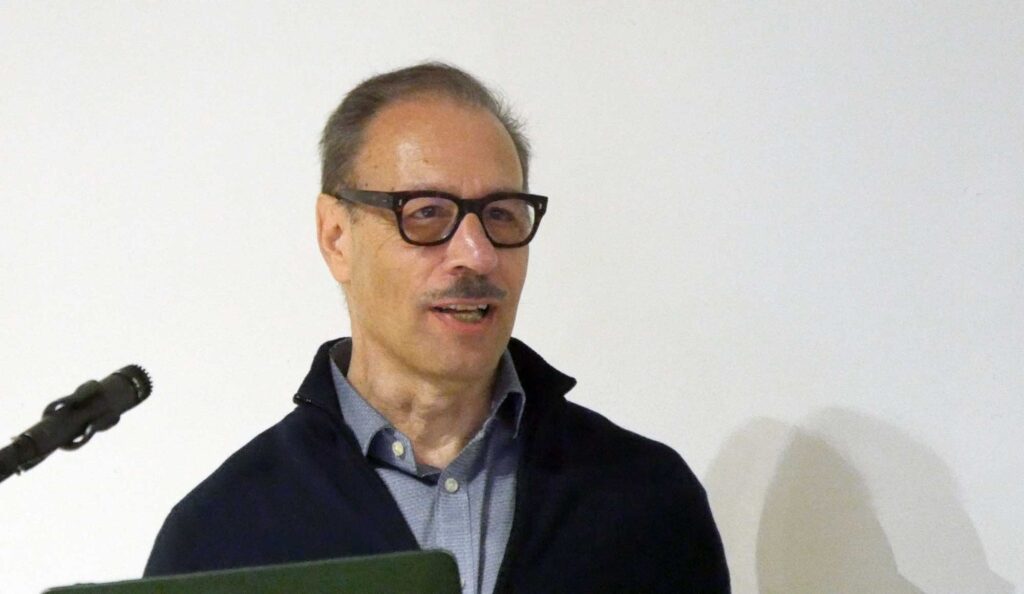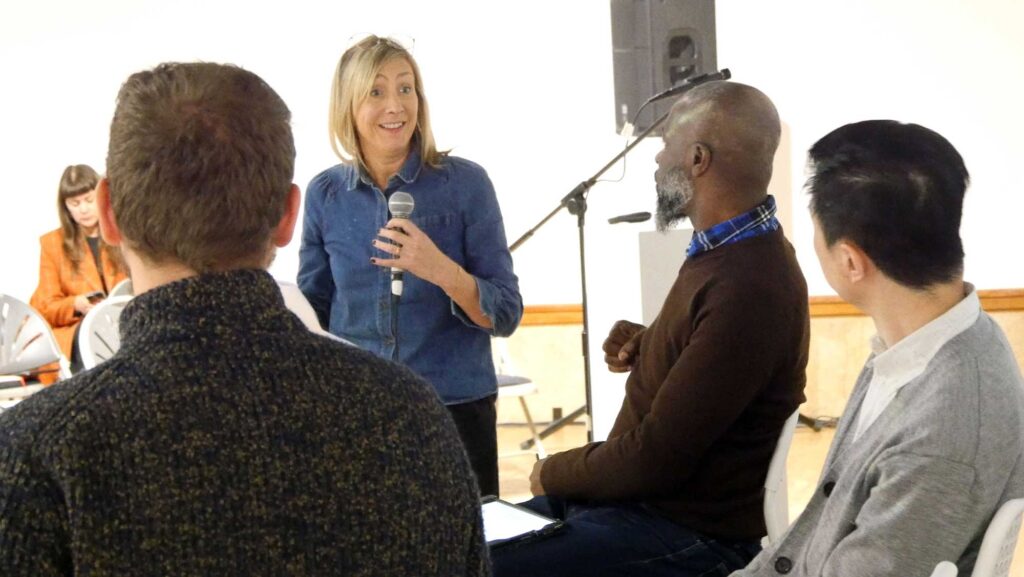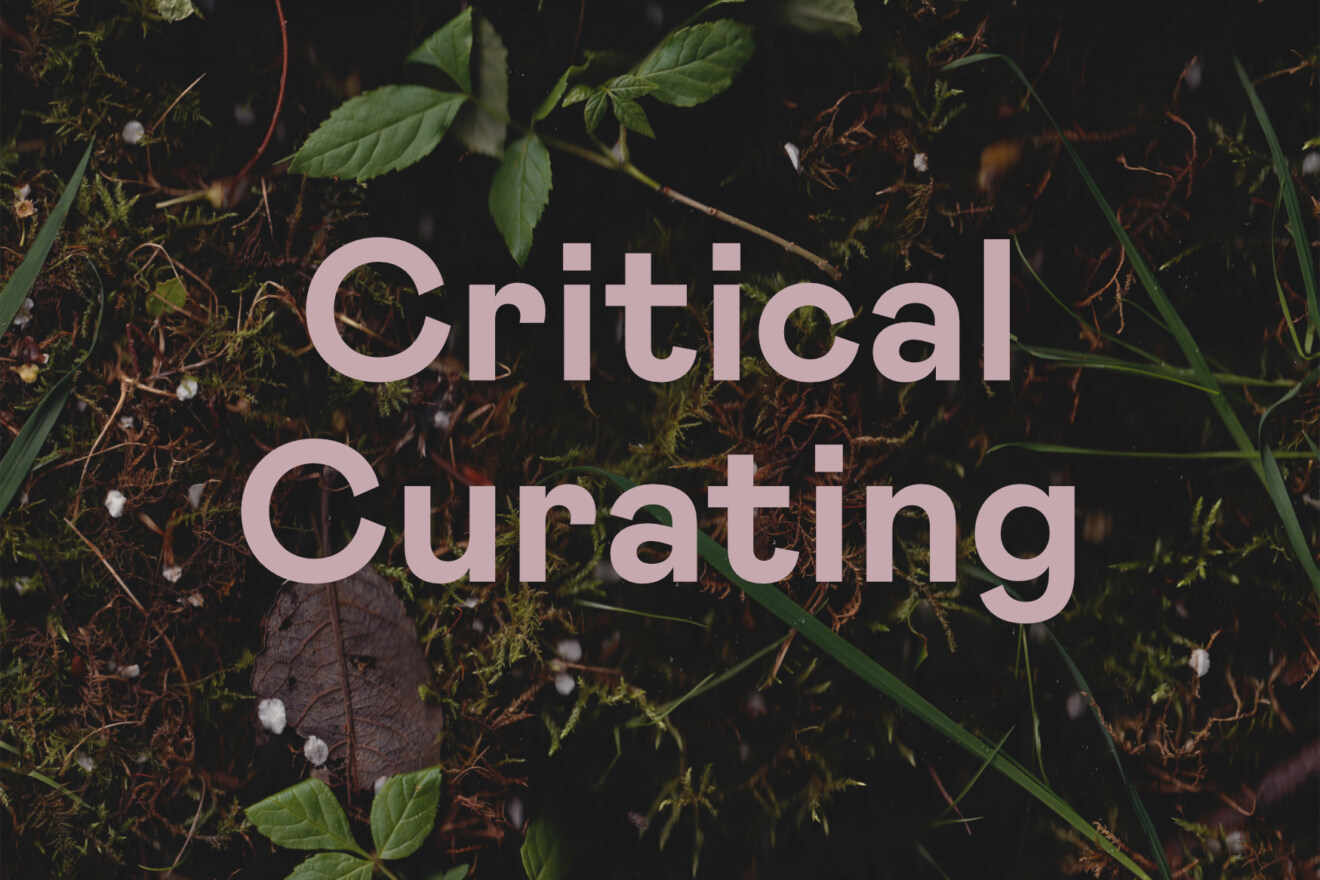10 November 2023, The Herbert Gallery and Museum, Coventry
Curatorial practices in museums, galleries and the public space are instrumental in creating new and critical forms of cultural engagement with the material and conceptual world that surrounds us.
Artworks, artefacts, archives, images, ideas, and conversations are put in dialogue to create new understandings, unexpected relations, and productive tensions. Moreover, curating offers methods to think critically about the material world around us and how we generate knowledge about it.
In this series of conversations, international curators and researchers discussed some of the key areas of curatorial practices today:
1. How does curating imagine the world and generate knowledge differently?
2. How does curating provide critical tools to re-situate colonial collections and archives?
3. What is the critical work of the Biennial today?
These questions were unpacked by curators and researchers from around the world including:
Louise Adkins (Coventry University)
Elizabeth Benjamin (Coventry University)
Cătălin Gheorghe (George Enescu National University of the Arts, Iași)
Ryan Hughes (Coventry Biennial)
Steven Henry Madoff (SVA New York)
Joshua Jiang (Birmingham City University)
Judith Mossman (Coventry University)
Bige Örer (Istanbul Biennial & İKSVi)
Antra Priede (Art Academy of Latvia)
Carolina Rito (Coventry University)
Ian Sergeant (Coventry Biennial)
Henk Slager (HKU Utrecht)
Mick Wilson (University of Gothenburg)

What is curatorial research?
Carolina Rito is Professor of Creative Practice Research at the Research Centre for Arts, Memory and Communities (CAMC) at Coventry University. Prof. Rito began by defining what curatorial research is not. It is not the study of exhibitions or of curators’ work, she said. It is not the representation or display of research findings through curatorial formats, since this can be done by any discipline. And it is not the investigation of themes through curatorial formats of workshops, dialogical performances, screenings, discussions, publications, because, she explained, these situate the person doing the research as an art historian, exhibition expert, or curatorial studies scholar.
Instead, curatorial research as an investigative practice, she said, ‘applies the epistemic capacities of the curatorial formats,’ asking questions through the activation of those formats, not only showing the results or conclusions. In other words, the curatorial formats of exhibition, publication, discussion etc become tools for investigation which can be brought outside the gallery and the academic and cultural spheres.
How does this happen in practice? Through the articulation and making public of material and immaterial cultures. It doesn’t provide definitive statements, but an open arena for contributions from many collaborators. Debates provide critical tools to intervene in society. This looks more like a forum than exhibition.
This process involves multiple temporalities. ‘Difficult questions,’ she explained, ‘need more than one entry point, more than one mode of articulating those questions.’
Thereby, she said, ‘curatorial research becomes a place from which to establish new juxtapositions between seemingly unrelated objects, artifacts, ideas, and conversations.’ It takes on the capacity to ’circumvent linearities of time, and how things make sense according to certain protocols of knowledge production.’ By bringing a diversity of voices, perspectives, disciplines,m and frameworks, ‘it opens new ew pathways to make sense of the world and its contemporary urgencies.’
Moving beyond a working definition of curatorial research, Prof Rito then dug deeper to detail the epistemic capacities she spoke of – how curatorial research creates new knowledge.
‘These,’ she proposed, ‘emerge much more outside formal institutions of knowledge production,’ chiefly academic and cultural institutions. Indeed, they challenge them – for example disciplinary boundaries. Although these contain resources that can be used, in order to flourish, curatorial research needs freedom to experiment across and outside these boundaries.
For these traditional, long-established institutions, she observed, ‘are part of the colonial episteme’ – of which neoliberalism is related. Neoliberalism, she explained, has formed a specific idea of culture, incorporating the imperative of endless growth with regard to footfall, funding, and cultural output. ‘This,’ she noted, ‘keeps staff pretty busy, and prevents the time needed for deep enquiries.’
The need and the urgency of curatorial research, therefore, comes from the need to generate more plural forms of knowledge production. And the force driving it is an epistemic one. She mentioned the decolonial scholar Arjun Appadurai, who spoke of the right to research: research should emerge everywhere a question is asked, and need not necessarily draw on existing methods. She cited the research of Tate’s Emily Pringle as an example: not about a collection but about the nature of that collection.
As well as the decolonial impulse, curatorial research is indebted to feminist and queer theories, to question the supposed universalism of academic knowledge, and instead promote situated positionalities and enquiries.
‘So we need more than one instance of making public these curatorial discussions,’ she said in conclusion, a constellation of different curatorial gestures.’ The audience, then, are regarded less as recipients of curatorial products and outputs and more as active participants, as stakeholders.
Changing Concepts of Curatorial Enquiry: Politics, the political and political imaginary
Curatorial research has long contributed to developing new ways of understanding the material and immaterial world around us, activating critical debates about collections and museums, and developing curatorial formats capable of intervening in culture and society. Although curating in academia and museums is typically seen as the display and dissemination of pre-exhibition research, the expanded field of curatorial practice has shown that research also takes place in the making-public of curatorial formats, through new constellations of artefacts, artworks, ideas and debates. This talk will flesh out some of the unique features of curatorial research beyond the presentation of research, i.e., its epistemic infrastructure.

Mick Wilson is Professor of Art and Director of Doctoral Studies, at HDK-Valand, University of Gothenburg. He delivered a short presentation proposing that wider changes in the orientations of curatorial research might be tracked through looking at the changing fortunes of the terms politics, the political and political imaginary as operated within the curatorial field. The concrete examples used to evidence different approaches and usages of these terms, were drawn from both doctoral and non-doctoral research contexts
Prof Wilson discussed politics in curatorial practice. Pointing to the Venice Biennale’s Giardini as a map of imperial powers for example, he also displayed a photo of Mussolini and Hitler meeting at the Biennale, to illustrate the connections. ‘Geopolitics,’ he pointed out, ‘is integral to the system of distribution and display’ in the art world.
Yet conversely, art can also act as a site of political work, and even diplomacy. He pointed to the year 1989 as marking a shift from exhibitions about politics to exhibitions claiming to do something political: exhibitions as a space for, or a site of, politics. A political imaginary, he said, is ‘not opposite of the real, but part of the production of the real that depends on imagination.’ For some, he noted, this kind of politicisation is a breach of art’s specificity.
Alongside the thematisation of politics in exhibitions has come a racialising of participation – even a repressive form of inclusion. He proposed that it’s not only about merely including other voices, but recognising who has the power to stimulate change.
Regarding institutional pressures, he said, ‘There’s a tendency to assume that artistic research is in the wild, but the art world contains another set of protocols and forms – that are deeply regulated, habituated, restricted, conservative.’ Universities, for example, may not necessarily have a monolithic set of protocols.
Changing Concepts of Curatorial Enquiry: Care, Ethics, and Research

Henk Slager is a professor, researcher, and curator, HKU University of the Arts, Utrecht. In this presentation, the current debate about paradigm formation in artistic research was chosen as a starting point. The way in which artistic research operates as a convergence of creative practice, artistic thinking, and curatorial strategies shows strong similarities with the definition of care proposed by Maria Puig de la Bellacasa: a dynamic, triangular interaction between labor, affect, and politics. This proposition was briefly elaborated on the basis of three research projects. Starting from the statement Research is another word for Care (Marion von Osten), a further reflection on the significance of this perspective for the topical discussion about curatorial research was developed
He took on the issue of care in artistic research. Curatorial care, he proposed, means a responsibility to work against repression, exclusion, and marginalisation. This, he said, ‘requires other modes of thinking and being that are sensitive to difference.’
A key part of this, for him, is chronopolitics, drawing for example from the philosopher Byung-Chul Han and his reactions to the perceived acceleration of life in contemporary capitalism. As an example, Slager pointed to the 2019 documentary Stones Have Laws.
Echoing Wilson, he pointed to the political potential of the curatorial: making an ethics of care public in a strategic manner, based on an understanding of the politics of display. How care is disseminated, performed and propagated, he said, resists categorical resolution.
Biennales in Times of Crises
The proliferation of the format biennial in the last century has developed many different discourses and concepts. This section discussed new definitions of publicness of biennial making. It also triggered a discussion on different strategies, tactics to respond to the world crisis and create a space of solidarity, cooperation or antagonism. It asked the question: can biennials respond to the times of social, economic and ecological crisis and wars?

The panel was moderated by Ian Sergeant, a Post-doctoral Research Fellow with Transforming Collections, University of the Arts London, and curator with Coventry Biennial 2023. The panel dispensed with introductory talks by the panelists; Sergeant, who curated the concurrent Coventry Biennial, instead launched right in with his own questions – around new definitions of publicness; around strategies and tactics to respond to crisis; around the roles of audiences; and, as he asked, ‘How do you make and keep infrastructures critical?’
‘Let’s face it,’ admitted curator Joshua Jiang, ‘art can do very little.’ It acts too slowly, for one thing; it’s as if pandemic never happened, for example. Prof Jiang is Professor and Head of Research at School of Art, and Director of the Centre for Chinese Visual Arts, Birmingham City University.

He held up a great counter-example however: Don’t Follow the Wind, a curatorial project led by Jason Waite that responded very quickly, and innovatively, to the 2011 earthquake and nuclear disaster in Japan. The promise of biennials, he said, is as a platform for other voices to respond to issues. Don’t Follow the Wind indeedforegroundednonhumans voices – a recurring point throughout the day.
In his own work, he discussed the balance between indigenous and visiting audiences. In curating the Thailand Biennial, for example, he jokingly asked, ‘Can I have a few islands?’ And he got them. This meant that each biennial could take place on a different one. The main audience, he observed, is mostly tourists: not even aware that a biennial is on, they don’t come to see art, rather they encounter it. The opportunity, however, is that the biennial gives them the chance to make friends with the locals – the first audience, as Jiang said.

Ryan Hughes is Artistic Director and Chief Executive Officer of Coventry Biennial (and an artist himself). He responded to a question about how to maintain contact with local communities, by observing that biennials often employ visiting superstar curators, but this could be balanced with local engagement.
To that end, he also added another audience: local councils and other authorities. They became important stakeholders in his experience. He also pointed out that, while art can be slow to respond to events and issues, biennials offer the important aspect of recurrence – ‘This,’ he said, ‘fosters the opportunity to ask ourselves how relevant, and representative we are.’

From the audience, Coventry PhD student Marley Treloar asked about slow curating – the opposite of rapid response to issues. Jiang answered with a question of his own: ‘When is the best time to respond?’ It may not be right away.
Coventry University Cultural Institute

Judith Mossman, Pro Vice-Chancellor (Arts and Humanities), is responsible for the strategic leadership of arts and humanities across the Coventry University Group. She presented the plans for Coventry’s new City Centre Cultural Gateway, in the city’s former IKEA building, due to open in 2025. It will house the national collections of the Arts Council and British Council. It will also feature a Coventry University cultural hub on its upper floors, including a gallery, studios for cultural startups, a library, event space, and postproduction facilities.
An Enfolding: The Exhibitionary Complex and the Self

Steven Henry Madoff is the Founding Chair of the master’s degree program in Curatorial Practice at the School of Visual Arts in New York.
A common term to describe the vast infrastructure of the contemporary art world is ‘the exhibitionary complex.’ And, of course, it is only within this massive, metastasizing infrastructure that a question like this could emerge: ‘How does curating imagine the world and generate knowledge differently?’ But before we come to a question like this, it’s crucial that we address the people for whom all of this is for and on which all of it depends—the viewers of art. Each ‘I’ that traipses through the exhibitions of the world is not merely a unit to be counted or counted on for sales, but a self who is, supposedly, the subject for whom this sprawling machinery churns. And so, philosophically, there are other questions to be asked: How is each of us situated as an ‘I’, as a reflecting and reflective being amid all of this curating? We are already formed as selves, but how are we deepened and elaboratedas selves in receiving all of this curatorial knowledge? Or are we? That was the subject of this talk.
Madoff detailed the stated and unstated aspects of ‘the exhibitionary complex’, a term coined by museum scholar Tony Bennett in relation to national power structures and nation-state ideologies.
Prof Madoff described it as ‘a structure supporting and supported by certain forms of knowledge’. Here he referred to philosopher Michel Foucault’s notion of the dispositif or apparatus, which includes ‘discourses, institutions, architectural forms, regulatory decisions, laws, administrative measures, scientific statements, philosophical, moral and philanthropic positions’.
Madoff likened this apparatus to a machine, an ‘exhibitionary automaton’, drawing from Marx. ‘Curation,’ Madoff suggested, ‘moves in same expansionist direction even while claiming to undo it.’
Given this, he proposed that, opposed to this centrifugal force is the individual: making, selecting, or standing in front of work. Viewers as ‘workers of reception’. Seen in this way, the museum or gallery becomes a ‘crucible of attention’ – not unlike social media, perhaps.
His point was that ‘there is no “we” without “I”, and (curatorial) care then becomes care for the self – a deepening of the self. Viewed collectively, then, individuals come together in ‘shared agential belonging’, and such agency can being about change, ‘nurtured,’ he concluded, ‘on the back of the exhibitionary beast.’
Co-curating inter-educational modes of ‘the infrastructural’

Cătălin Gheorgheis a theoretician, curator, editor, and Professor of Curatorial Research & Practice at “George Enescu” National University of the Arts in Iași.
As the curatorial is considered a complementary, supplementary, or subversive practice that generates research-based projects, dialogical actions, and open forms of production and presentation, the infrastructural aspect of the curatorial consists in activating different networks to conceptualise and propose how to create circumstances for critical and/or compositional articulations. The challenge is to produce and engage with interstitial infrastructures that run through, under, or above the existing infrastructures of power. As such, as critical curators design infra(echo)structures of care, a relational molecular intereducational initiative can generate new spaces for learning how to coexist in a decapitalized common infrastructure
Prof Gheorgheis stressed the need to investigate the curatorial alongside the infrastructural, looking at the conditions, effects, relations, and uses of both. The infrastructural, he observed, is similarly about how to create circumstances for different articulations, and we need to experiment with different formats and social processes; he has been exploring radio for example.
‘If the curatorial is an event of knowledge,’ he said, ‘the infrastructural is event of connection, and transference.’ While the curatorial connects objects, images, processes, people, locations, histories, and discourses in physical space, the infrastructural holds relational, spatial, temporal, and perceptual complexities.
Therefore, he proposed, we need to look at ‘interstitial infrastructures that run through, under, and above infrastructures of power’, not merely raising questions but questioning the questions. A critical form of curation can connect such infrastructures – for example academic and artistic ones. By working in between, he said, we can generate hybrids, not artworks.
‘In art,’ he reminded the audience, ‘you are not obliged to think. Knowledge is not always produced by humans.’
Collective practice case study in curatorial education

Antra Priede is an art historian and curator, Vice-rector for Academic Affairs, Art Academy of Latvia, Head of Curatorial specialisation, Art History Department
While experimenting with open formats for curatorial education, there have been numerous examples which have changed the methodology and practice. Continuing the path of the educational turn and the focus on social and educational responsibilities of curators in shaping cultural narratives and fostering inclusivity, there still is a way to invent different type of “institutions” as practical educational forms. As a case study of region-specific collaborative practices, the focus here was on several aspects from curatorial changemakers from the perspective of aesthetics of care, curating from the unknown, body knowledge and relational responsibilities.
After a full day of discussions, Priede provided a case study, from the Master of Curatorial Studies programme she leads in Latvia. This is a relatively new field of study in the region, which also does not have a history of institutional critique. There is still no contemporary art museum in Riga, the Latvian capital.
One of her first tasks, therefore, has been to create a curatorial lexicon in Latvian. But instead of merely adopting existing practices from other parts of Europe, they are developing new approaches, such as ’working from the unknown,’ as she said. This means making mistakes, and embracing the unexpected.
With the countryside all around and easily accessible in Riga, the notion of the periphery became important. ‘The countryside is not just something we observe there,’ she told the seminar participants.
Working as a collective was an ideological choice for the students, and they also worked with an artist collective. In this mode of working, she said, everything is processual. In a half-year project, they built a 10m square cube clad in grey wood – a grey cube contrasting with the traditional white cube of the gallery as another ideological choice. It was situated in the countryside, open to the sky, and without lights or electricity. It therefore held great potential in its approach and its constraints.
However, three weeks before the opening, the structure burned down. Adapting to circumstances, the group chose to curate the intangible, transforming it into a fire pit for ceramics.





